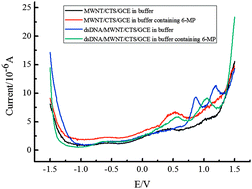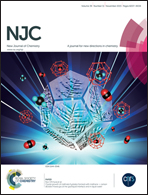Electrochemical sensors based on multi-walled nanotubes for investigating the damage and action of 6-mercaptopurine on double-stranded DNA
Abstract
Biosensors based on nanomaterials provide a means for sensitive and rapid detection of DNA damage. To investigate the electrochemical behavior of 6-mercaptopurine (6-MP), including the damage to double-stranded deoxyribonucleic acid (dsDNA) by 6-MP and the damage mechanisms, a dsDNA/MWNT/CTS/GCE biosensor was constructed using multi-walled carbon nanotubes (MWNTs) and chitosan (CTS) as the modifying materials. The experimental results showed that after being modified, the active area of the MWNT/CTS/GCE significantly increased and the oxidation peak current of the MWNT/CTS/GCE in response to K3[Fe(CN)6] exhibited a remarkable increase. The characteristic peak of 6-MP on the biosensor was determined to be approximately 0.55 V using differential pulse voltammetry (DPV). Clear damage to dsDNA caused by 6-MP was observed. The damage to adenine was more severe than to guanine. The interaction between 6-MP and dsDNA could be explained as an intercalation during the electrochemical oxidation process on the modified electrode, which was an irreversible process controlled by adsorption and was accompanied by the transfer of a single electron coupled with a single proton.


 Please wait while we load your content...
Please wait while we load your content...